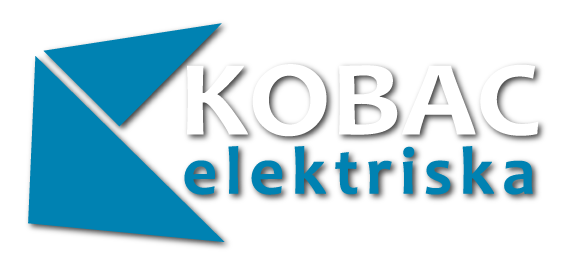Control rats received 0.9% saline injections (1 mL/kg) at the same time. This paradigm of Meth exposure is comparable to that used by human Meth users (McCann et al. 1998) and produces deficits in dopamine transmission (Volkow et al. 2001; Callaghan et al. 2012). This binge injection paradigm was chosen over the self-administration procedure because it is well-suited for studying the dose-dependent pharmacological eco sober house interactions with EtOH. It utilizes a well-documented and specific dose of Meth over a defined time window after the exposure to EtOH and avoids the confounds of more protracted and variable times required to train rats to self-administer a given Meth dose. If you feel that you sometimes drink too much alcohol, or your drinking is causing problems, or if your family is concerned about your drinking, talk with your health care provider.
The effects of these drugs can be dangerous and unpredictable, as there is no quality control and some ingredients may not be known. Meth addiction can be harmful to health, to the harbor house sober living extent that it can even be fatal. It’s important to recognize this addiction and seek help for it as soon as possible. Behavioral therapies have proven effective in treating meth addiction and can help you live a substance-free life. Using meth can also put the person at risk for a drug overdose, which is when the person consumes too much of a particular drug, resulting in a toxic reaction that causes severe symptoms or death.
What does meth feel like?
Stimulants include amphetamines, meth (methamphetamine), cocaine, methylphenidate (Ritalin, Concerta, others) and amphetamine-dextroamphetamine (Adderall XR, Mydayis). They’re often used and misused in search of a “high,” or to boost energy, to improve performance at work or school, or to lose weight or control appetite. Using meth can cause long-term damage to the person’s health, which often persists even after the person has stopped using the drug. Methamphetamine, commonly referred to as meth, speed, or crack, is a powerful stimulant drug that affects the central nervous system. While some drugs slow down the body, meth speeds it up by triggering a burst of energy and an intense rush of euphoria.
If you inject meth with a needle, you also have a higher risk of contracting bloodborne viruses like hepatitis C. The euphoria you experience when using meth may last only a few minutes. But other effects, like increased energy or higher body temperature, can linger for hours. Too much alcohol affects your speech, muscle coordination and vital centers of your brain.
- The drugs pass through the digestive system, so they release slowly into the bloodstream.
- Moderate drinking is one serving for women, or two for men, once per day, six days per week or fewer.
- Methamphetamine, commonly referred to as meth, speed, or crack, is a powerful stimulant drug that affects the central nervous system.
- This high is addictive and causes people to crave the drug repeatedly in order to achieve it.
Mixing Crystal Meth and Alcohol
A majority of methamphetamine (Meth) abusers also abuse alcohol but the neurochemical consequences of this co-abuse are unknown. Individually, alcohol and Meth cause inflammation and long-term alterations in dopamine and serotonin signaling within the brain. Experiments were conducted to identify if serial exposure to alcohol and Meth has neurochemical consequences that are greater than after either drug alone. Male Sprague Dawley rats voluntarily drank 10% ethanol (EtOH) every other day for 4 weeks and were then exposed to a binge injection regimen of Meth (10mg/kg injected every 2 hrs, for a total of 4 injections). EtOH drinking and preference increased over the 4 weeks and caused inflammation evidenced by increases in serum and brain lipopolysaccharide (LPS) and brain cyclooxygenase-2 (COX-2) 24 hours after the last day of drinking. Meth alone depleted dopamine and serotonin in the striatum, as well as serotonin in the prefrontal cortex when measured 1 week later.
Simply enter a keyword or location to find a suitable treatment center for you. You can also call our team at for free, confidential, 24/7 support finding addiction treatment programs that might be right for you. You can also check your insurance coverage for addiction treatment with our free insurance verification tool to get started. In 2020, about 1.5 million people in the United States over the age of 12 had meth use disorder.
Methamphetamine-Induced Brain Injury and Alcohol Drinking
If your health care provider prescribes a drug with the potential for addiction, use care when taking the drug and follow instructions. Physical addiction appears to occur when repeated use of a drug changes the way your brain feels pleasure. The addicting drug causes physical changes to some nerve cells (neurons) in your brain. Opioids are narcotic, painkilling drugs produced from opium or made synthetically.
Lifestyle Quizzes
This may work, but only for a little while, and only at great physical and psychological risk. People who struggle with depression or anxiety are at greater risk of self-medicating with alcohol, and abusing meth can induce these mood disorders. Depression is a sign of meth withdrawal, too, so a person may begin drinking alcohol to reduce the impact of that symptom. Prescription versions of methamphetamine come in pill, capsule, or tablet form, and they are consumed one to two times per day based on a physician’s assessment of their patient’s needs.
Sometimes called the “opioid epidemic,” addiction to opioid prescription pain medicines has reached an alarming rate across the United States. Some people who’ve been using opioids over a long period of time may need physician-prescribed temporary or long-term drug substitution xanax for sleep vs ambien during treatment. Some commonly inhaled substances include glue, paint thinners, correction fluid, felt tip marker fluid, gasoline, cleaning fluids and household aerosol products. Due to the toxic nature of these substances, users may develop brain damage or sudden death.
